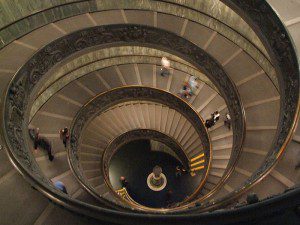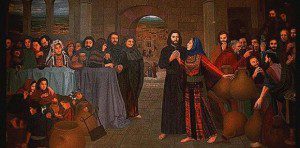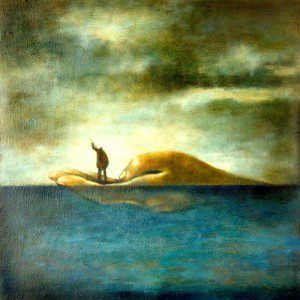
A woman graduate of an Ivy League divinity school shared this illuminating dream with me:
I am inside the Vatican, and the whole of the Vatican City is on fire. I am desperate to save priceless jewels that have been kept here. In order to save the jewels, I must release them from their settings, which are heavy and tarnished. As I prise more and more of the jewels free, I feel exhilarated. I feel that, even if the rest of the place burns down, I am saving what matters.
If this were my dream, I commented, I would follow its direction: to reclaim the gems of authentic spiritual experience and direct revelation from the encrustations of orthodoxy and religious bureaucracy.
Through the dream gates, we are brought back to the living heart of religious tradition. I have seen this in the dreams of many people of many faiths who have shared their experiences with me over several decades.
A young, secular New York Jewish media executive I know dreamed that an elderly, long-bearded man in a tall black hat taught him a specific ritual; he was to bob his head twice to the left, twice to the right, then up and down and so forth. His mentor explained that this was a form of meditation, and he should practice it regularly. When he told me the dream, the media executive speculated that his dream mentor was an Eastern Orthodox priest. “Maybe,” I responded, “but if it were my dream, I would think of Orthodox Jews, bobbing their heads at the Western Wall.” This struck a chord; he was familiar with davening and had seen it close to home. Yet there seemed to be something more specific going on in the dream. I suggested that we should consult one of my friends who was a student of Kabbalah and deeply involved in the renewal of Jewish mysticism.
“Abulafia,” my Kabbalist friend pronounced without hesitation. He proceeded to explain to us that the specific pattern of head-bobbing the young executive had been taught in his dream was one of a series of exercises developed by the great medieval Kabbalist, Abraham Abulafia, in combination with meditation on sacred letters and numbers. This discovery sent the young man off on a path of study and experiential exploration of the mystical practices of his Jewish forebears.
A hairdresser who was interested in the ways of her Italian ancestors but had little reliable information dreamed she was at an ancient site in Italy. On different levels of the site, firmly separated from each other, diverse activities were going on. On one level, women were decorating a primal image of the Goddess, a lumpish figure of rough-hewn stone and clay, in a cave-like space. On another level, men were celebrating communion, but not quite in the way of the church; they wore animal masks or strange caps, and their libations included bull’s blood. The dreamer moved back and forth between these different scenes. You might say she was exploring different levels of her psyche, and that might be part of it. But there were also strong indications that she was viewing quite plausible versions of what went on in two popular Mystery cults in the heyday of the Roman empire; the cult of the Bona Dea (“Good Goddess”), which was strictly reserved for women, and that of the god Mithras, initially reserved for men, which featured communion-style banquets and bull sacrifice. The dreamer believes (as do I) that she was given direct access to the experience of these ancient Mystery traditions. She revisited her dream site again and again, through the technique of conscious dream reentry, to learn more.

I dreamed I was holding up a painting of the Wedding at Cana in one of my workshops, inviting people to use the image of this Biblical event as a visual portal into the world of Jesus Christ and his disciples. I honored the dream by re-reading the New Testament story of the first of Jesus’ miracles, in which he turned water into wine. I was curious to identify the picture I had shown the group in the workshop I was leading inside my dream. It was painted in traditional style, reminiscent of the Dutch masters, but the colors were so fresh and bright it might have been painted yesterday.
I asked a religious scholar to help me search through the iconography. I was quite excited when she found a close match for my dream painting through an internet search. This version of the scene, titled “Marriage in Cana,” had been recently commisiioned by a church in England. It was painted by Raymond Gaston, an artist from the Philippines now resident in England. The artist said, “‘I dreamed the Blessed Virgin Mary took me to the banquet and she sat across the table in front of me. I moved back to view the whole room full of people. This I painted. I used as my models, friends and parishoners, young and old. For Jesus and Mary, I simply copied their faces from the visions I had in my dreams.” My dream brought me to a physical image that had been plucked straight from the dreaming.
Our dreams can awaken us to lost traditions and spiritual practices that were shared by our ancestors and therefore live in areas of the collective unconscious that are not truly remote from us. They offer paths of direct revelation and cultural soul recovery that will open to us as long as we are open to our dreams.

